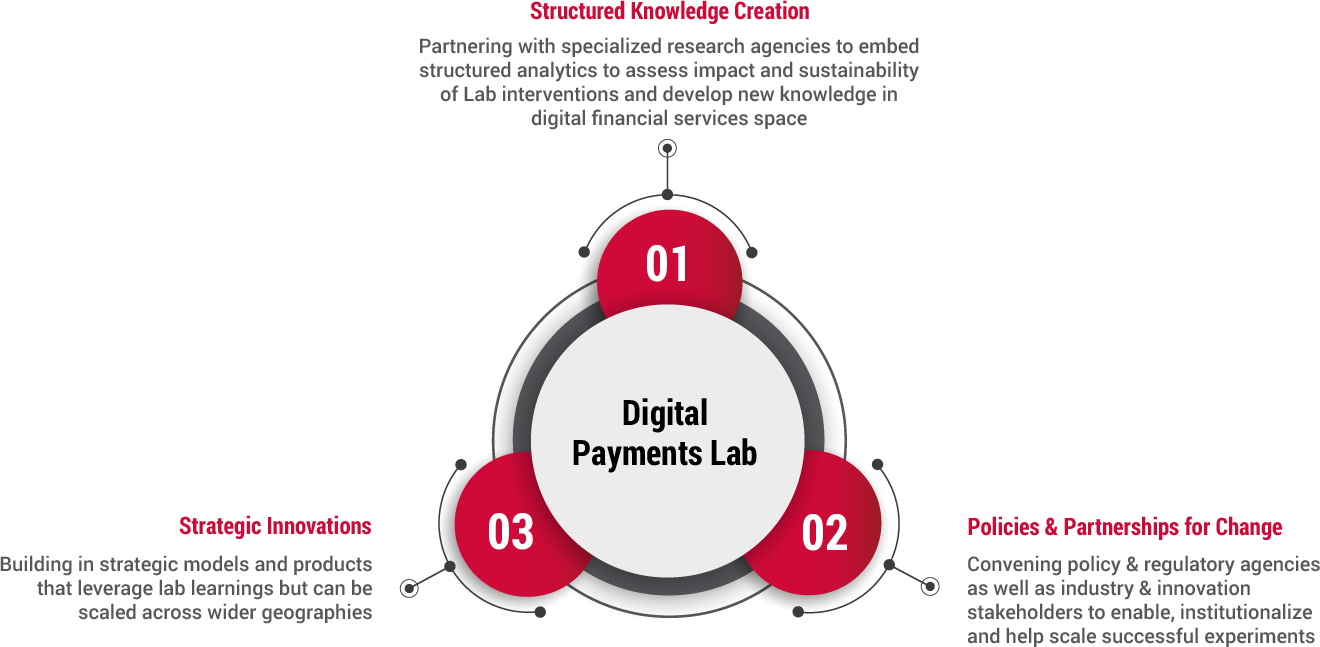LEARNING NOTE
WOMEN IN ULTRA-POOR COMMUNITIES & THEIR ROLE IN HOUSEHOLD FINANCIAL DECISION MAKING AND DIGITAL PARTICIPATION
Bhatta Basti is a low-income, predominantly Muslim community in Jaipur, Rajasthan, where the population is largely migrant, uneducated and cash-dependent. A scoping study was conducted among 200 low-income, self-employed married women to identify individual and household-level barriers to digital financial inclusion, and in particular their ability to take-up digital payment mechanisms for household as well as personal financial activities.
Literature in economics has historically treated the household (and internal decision-making processes) as a black box. As researchers have sought to unpack the dynamics of bargaining power and resource allocation, competing theoretical models have debated sources and realizations of power.
To translate academic frameworks into practical templates for implementation, we synthesized key findings from literature on financial decision-making with insights from field settings in Delhi and Rajasthan.
IN OUR MODEL, WE CONSIDER THE HOUSEHOLD FINANCIAL DECISION-MAKING CAPACITY OF AN ULTRA-POOR WOMAN AS A FUNCTION OF SEVEN ATTRIBUTES:
We hypothesize that analysis of these factors ought to provide a comprehensive portrait of not only a woman’s role within household and community decision-making, but should also provide insight into gaps in household knowledge sharing. To test the applicability of this framework, we used it to analyze household decision-making in Bhatta Basti in June and July of 2017.
EMPLOYMENT
Women played an active role in contributing to the household income either indirectly as unpaid family labor in home-based business or through direct employment in one of the following four trades:
All households reported receiving wages, salary and income payments in cash.
SAVINGS
Older women were significantly more likely to report independent savings, as were women who completed at least primary school indication that education and experience played a crucial role in improving personal financial decision making capacity.
HOUSEHOLD EXPENSE PAYMENTS
Women in our Bhatta Basti sample are actively engaged in the economic lives of their families.
expressed interest to use digital payments in the future for household utility bill payment suggesting high desire to move household financial activities to the digital dimension.
EDUCATION
The average woman in Bhatta Basti is literate despite no formal schooling.
Women who are less educated than their husbands are 6% less likely to have visited the bank, indicating poor financial literacy and engagement, suggesting that husbands with higher education levels control a greater share of household finances.
MOBILE USAGE
One in every two households own at least one smartphone though men largely control these devices.
Higher income households with older and more highly educated men and women were significantly more likely to have an additional mobile phone and a phone with internet along with an increase in her comfort level with using a mobile phone.
IDENTITY
Given the geographic exclusion and financial status of individuals in the area, high rates of bank account and identification penetration are a testament to the community mobilization and engagement efforts led by local NGOs and government bodies.
ACTIVITY
While bank account access and linkage is high, consistent usage remains low.
WOMEN’S DIGITAL PARTICIPATION: A GAP AND AN OPPORTUNITY
Ultra-poor women made short-term financial decisions regarding consumption purchases as well as minor informal savings indicating some sort of financial literacy and activity. However, awareness regarding formal household borrowing and saving profiles was low, suggesting detachment from financial decision-making and digital payment systems. Community organisations can play a vital role in filling this gap by engaging, educating and empowering women with financial decision-making and digital financial tools.
Almost all women were keen on learning how to use smartphones. Even more were interested to learn about and use digital payment mechanisms, especially for household financial activities. This willingness coupled with a high level of informal short-term purchase and saving activity can be used as a catalyst for digitization. Financial service providers can offer solutions catering to women’s financial needs to ensure and enhance women’s participation in the digital economy.
There exists a clear division of household financial activity based on type of decision, education level of members etc. In order to ensure wider usage of digital payments, efforts to move forward must divide energy between both male and female household members. Enablers can create a supportive environment for the local community, government agencies and private sector players to work together and expand women’s overall access to digital financial services.
TECHNICAL WRITERS: MAYA DURVASULA | MRIDULYA NARASIMHAN | NIDHI PUNMIA | VAISNAVI GNANASEKARAN
Interesting reads
- Best Casino Not On Gamstop
- Best Casino Not On Gamstop
- Top Casino Online 2025
- Casinos Not On Gamstop
- Non Gamstop Casinos
- Casino Not On Gamstop
- Sites Not On Gamstop
- Slots Not On Gamstop
- Slots Not On Gamstop
- Meilleur Casino En Ligne
- Casino Not On Gamstop
- Online Casinos Canada
- Casino En Ligne France
- Non Gamstop Casino Sites UK
- Non Gamstop Casino UK
- Gambling Sites Not On Gamstop
- Best Casino Sites In UK
- Casinos Not On Gamstop
- Meilleur Casino En Ligne Fiable
- Non Gamstop Casino
- Online Casinos Nederland
- Casino Non Aams Sicuri
- Best Non Gamstop Casino
- Non Aams Casino
- Casino Italiani Non Aams
- Casino En Ligne Bitcoin
- Casino En Ligne Belgique Liste
- Meilleur Casino En Ligne


